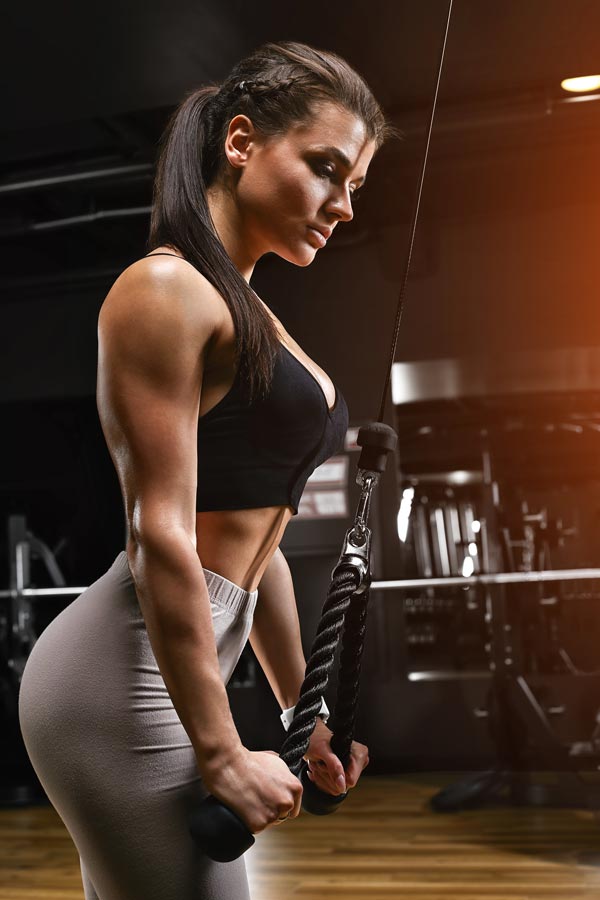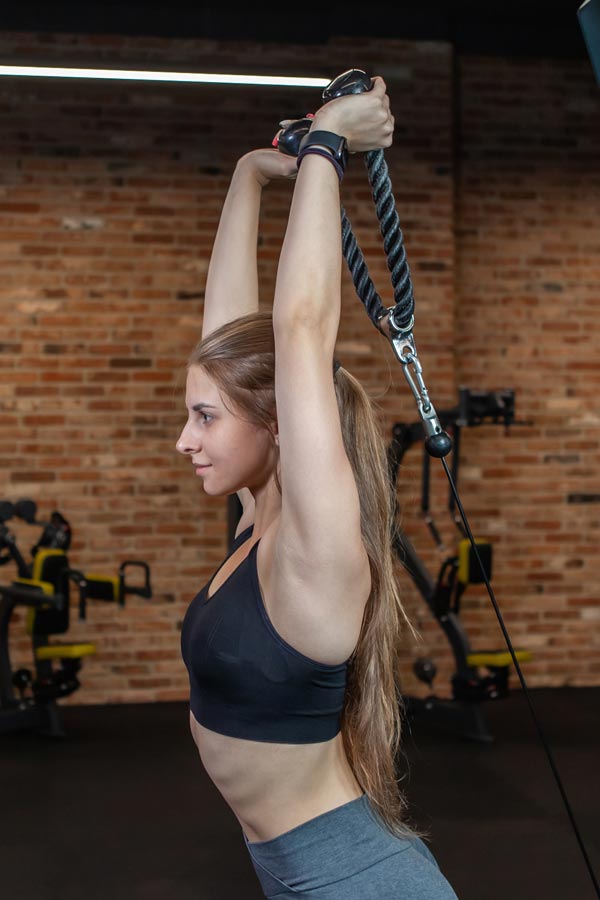
To develop muscle hypertrophy, training against external resistance remains the best way to achieve it. And hypertrophy is often the main goal of many practitioners and the primary reason they start resistance training. While many athletes seek to increase their muscle volume to improve their performance, gaining muscle mass is also very beneficial in fighting the effects of aging, sedentary lifestyle, physical inactivity and many other diseases.
Between gym and scientific literature, consensus on training and the variables to be manipulated have been established to maximize hypertrophy in all types of publics. You can read (or reread) our articles on the impact of volume, frequency, muscle failure, tempo and inter-set rest on muscle volume gains. However, there is still much to learn about the choice of exercises and how to perform them.
One of the parameters that is being studied more and more is the length at which a muscle is trained. It would seem that training at long muscle length would maximize hypertrophy compared to training at short length. In addition to this, the characteristics of the muscles being trained must be taken into account, especially if they act on one or more joints. As we recently explained in one of our articles, hamstring hypertrophy (a primarily bi-joint muscle group) was greater after 12 weeks of seated leg curl training compared to a prone leg curl. Even though both exercises are performed full range of motion (full ROM), the seated leg curl places the hamstrings in a higher stretch due to the hip flexion induced by the seated position. It is likely that these results will be reflected in other bi-articular muscles...
The triceps brachii is a muscle of the posterior part of the arm. As its name indicates, it is composed of 3 chiefs: the long portion, the vastus medialis and the vastus lateralis. The triceps brachii acts primarily as an elbow extensor, however, it is also bi-articular thanks to the long portion and therefore, also acts as a shoulder extensor. Isolation exercises used to develop the triceps include pulley exercises such as low pulley vertical extensions (where the arm is placed over the shoulder) and high pulley vertical extensions (where the arm is placed at the side of the body). Will the variation where the long portion of the triceps is more stretched allow for more hypertrophy?
To verify this, Japanese researchers (the same team that studied hamstring hypertrophy) compared the impact of these two exercises on triceps brachii hypertrophy. For 12 weeks, 21 young adults (7 women and 14 men), nonresistance-trained practitioners, performed two weekly sessions with one arm performing overhead extensions and the other arm performing pushdown extensions. The participants performed 5 sets of 10 repetitions at 70% of 1RM for each arm, and thus for each exercise. When a workout was completed without failure, the load was increased by 5% of the 1RM in the following workout. For each variant, the 1RM was assessed before and after the training protocol and the muscle volumes of the triceps brachii, long portion and the vastus medialis and lateralis were determined via Magnetic Resonance Imaging (MRI).

Figure 1. Pushdown.

Figure 2. Overhead triceps extension.
The main results of this study show that triceps brachii hypertrophy is significantly greater with low pulley extensions than with high pulley extensions. The volume of the triceps brachii gained +19.9% when the arm was placed in full flexion, whereas the gain was only 13.9% when the arm remained placed against the trunk. In terms of the volume of the triceps chiefs, the long portion, which was more stretched in the overhead position, naturally gained more volume (+28.5% vs. +19.6%), but the results also show a greater gain for the vastus lateralis and vastus medialis, which are mono-articular, (+14.6% vs. +10.5%) thanks to the extension variant at the low pulley. This suggests that factors other than muscle length difference may be at play. When the arm is fully flexed, the long portion of the triceps is stretched and its muscle fibers operate primarily at the edge of the descendant limb of the tension-length relationship where it can produce little force. It is therefore likely that the vastus medialis and vastus lateralis must compensate. This would explain why these mono-articular chiefs would undergo more hypertrophy in this variant than in the one where the arm is alongside the trunk.
Concerning the gain in strength, both arms gained similarly (+71.4% for the extension with low pulley and +62.3% with high pulley). It should be noted that the level of strength when the triceps is in the stretched position is lower than when the arms are placed along the trunk.
This study shows once again that an exercise variation that trains a muscle with a long muscle length, in this case vertical extension with the low pulley, would result in greater hypertrophy. But again, this study was done with beginners in strength training. Why is this detail important? Simply because muscle volume can increase longitudinally and transversely. And when the muscles work over a longer length, they can undergo more or less passive tension, which induces longitudinal hypertrophy of the muscle. This is mainly observed in people who are not used to training at great muscle length. This phenomenon would tend to be reduced with practice and the progressive increase (but to a certain point) of muscle volume in series. Since the researchers did not take this variable into account, further studies with advanced exercisers will be necessary.
This being said, in practice, the choice of exercises for a given muscle group must include at least one exercise that allows a complete stretching of the muscle (within reason according to the capacities of each individual), especially if it is a poly-articular muscle, and an exercise where the amplitude of work allows the muscle fibers to produce maximum mechanical tension.
We remind you that you can quote articles by limiting your quotation to 200 words maximum and you must include a nominative link to this one. Any other use, especially copying in full on forum, website or any other content, is strictly prohibited. In doubt, contact us.
Copyright © 2011-2024 - www.sci-sport.com - All rights reserved